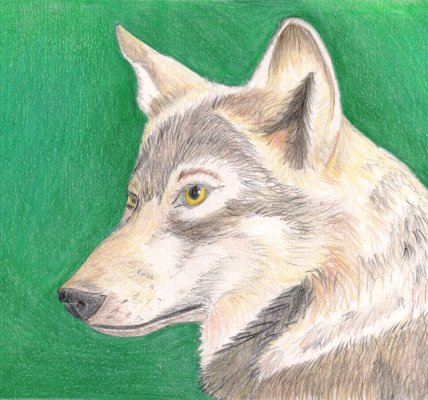Drawing Birds
On this page, you’ll find a few sample tutorials to learn how to draw birds through various step-by-step instructions.

Drawing Wings
Detailed information about drawing bird wings can be found on this page:

Bird Tutorials
Here I show you in simple steps how to draw different bird species. This works best with a photo reference or a real bird (as long as it has enough patience and doesn’t just fly away). First attempts may not look great, because you first need to study and recognize proportions and body structure in order to depict them accurately through drawing.
 |
 |
The most important thing is patience. Even if your first drawings don’t meet your expectations, it’s important not to give up and to keep going. Because it’s the practice that will ultimately help you improve. I’ll show you drawn examples here and how they were first broken down into basic shapes. For many, copying drawings is easier than simplifying a photo themselves.
I wish you lots of success and always really enjoy getting feedback!
Drawn Goose
Geese belong to the larger waterfowl. Domestic geese, unlike wild geese, are fat and overbred. They have lost the ability to fly. Their rump (back end) is especially fat because the fat keeps them warm in the water.
Because of their body proportions (slender, long neck and a bulky body), they have a waddling gait. But geese can become very fast and aggressive.
The basic sketch of a walking goose. Here you see the sketch of the goose image. And finally the finished drawing.

Drawing Birds: Duck and Drake
The duck is a native waterfowl, with males and females differing in coloration. The drake of the mallard has a gray-black body and a dark green shimmering head. In contrast, the duck only has a brown, mottled plumage for better camouflage on the riverbank.
Because ducks are waterfowl, they have a pronounced, fat rump. Here you see a sketch of a duck. And this is how the finished duck drawing looks.

Rooster and Hen
Chickens are among the most popular farm animals, mainly because they lay eggs regularly. The rooster is characterized by its striking, often colorful plumage and a large leathery comb (the cockscomb), which is significantly smaller in the hen. Generally, the rooster is slightly larger than his plainly colored hen.
Additionally, the rooster has a large tail. In this sketch, you see the rooster in front and the hen behind. In the drawing, you can see both chickens together.

Sketched Flamingo
Flamingos owe their typical pink color to their diet of small crustaceans. If they don’t eat them, they appear pale whitish and have noticeably gray long legs. Their curved beak is perfectly shaped for filtering water to sieve out the mentioned crustaceans.
Since they prefer to stand in very salty water, they need long leathery legs to protect their bodies. The typical one-legged stance serves both for protection and resting.
The sketch shows a flamingo. Here is the finished flamingo drawing.

“Laughing Hans”
The “laughing Hans” is also known as a kookaburra or laughing jackass and is a small brown Australian bird, named for its inimitable, laughing call.
They have a strong beak and, compared to their body, a relatively large head. Below it is a stocky body with short legs and small, sharp claws.
We’ll start again with a basic sketch of the kookaburra. Then continue with a more detailed sketch of the small bird. Lastly, you’ll see the completed drawing.

Photo References
In my German-language blog, you’ll find some photo references for tracing different birds.
More Pages
From the german Blog
Here I’ve linked a few blog posts where I painted different birds using various materials. Take a look to see how the individual drawings came to life step-by-step:

























